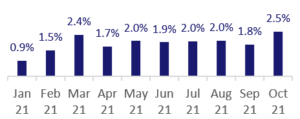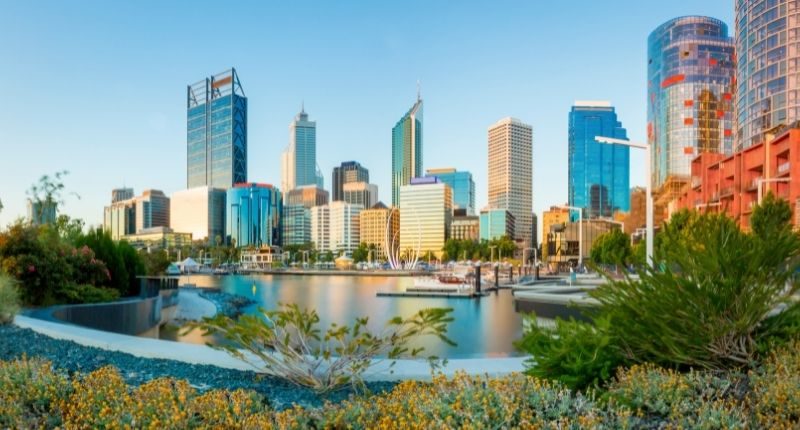- Housing values peaked at 2.8% in March, currently 1.5%
- Top 25% of dwelling values disproportionately impacted by price growth
- Perth growth rate declining rapidly, unlike steady conditions in Brisbane and Adelaide
The latest data from CoreLogic indicates the growth rate of Australian house values is losing momentum, with Perth decelerating the fastest.
CoreLogic predicts the growth rate to slow even further into 2022, theorizing that an increasing number of listings, limitations on affordability and an expected increase in mortgage rates will drive the trend.
Housing values reached their peak rate of monthly growth in March this year at 2.8%, totaling an approximate $16,000 increase on the median value.
Monthly growth rate in Australian dwelling values

SQM data reflects that national asking prices have largely been on the rise since 2009, and have seen an uptick within the past few years.
The weekly asking price at the end of October was $727,752.
National
High value dwellings most impacted
Dwellings with values on the higher end of the scale (around or above $1 million) have been disproportionately impacted by price increases, also observing their peak growth in March at 3.5%.
The price growth for high end house has since run out of steam however, reducing to 1.5% monthly growth in October.
The overall value growth since the same time last year was 25.4%.
Dwellings at the lower end of the market, valued at around $466,000 or less, saw price growth remain relatively stable and an overall growth rate of 16.7%.
Perth fastest declining capital city
Perth recorded the most rapid reduction in price growth, slowing from 2.7% in February to -0.10% in October. The swift decline is likely due to drawn out border closures, affordability constraints for first home buyers and rising new listing volumes.
Perth was followed shortly by Sydney, which decreased from a peak of 3.70% in March to 1.50% in October.
In contrast, Brisbane recorded a marginal increase of 0.1%. Brisbane first peaked in March at 2.4%, and fluctuated slightly before setting a new peak in October at 2.5%.
Brisbane housing values in 2021

Similarly, Adelaide’s price growth rate remained relatively steady and returned to its April peak of 2.0% again in October. Only a 0.4% fluctuation was observed throughout the 6 months, decreasing to 1.6% in June.
Hobart, Canberra and Darwin all experienced decline in the growth rate of housing values, since peaking earlier in the year.
House value growth rates by capital city, compared with peak rates
| Capital City | Peak Month | Peak Rate | October Rate |
| Sydney | March | 3.70% | 1.50% |
| Melbourne | March | 2.40% | 1.00% |
| Brisbane | October | 2.50% | 2.50% |
| Adelaide | April, October | 2.00% | 2.00% |
| Perth | February | 2.70% | -0.01% |
| Hobart | March | 3.30% | 2.00% |
| Darwin | April, May | 2.70% | 0.40% |
| Canberra | March | 2.80% | 1.90% |








